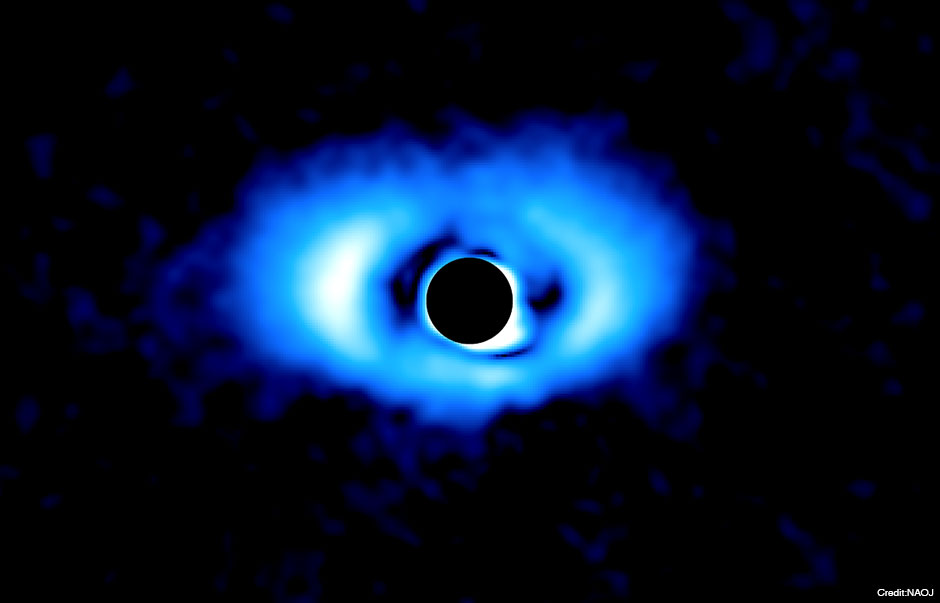Giant Gap in a Protoplanetary Disk
Astrophotography・

This is a near infrared image of the protoplanetary disk around PDS 70, a star which was observed as part of Strategic Explorations of Exoplanets and Disks with Subaru (SEEDS). There is a bright star in the center, so mask processing is done to emphasize the disk. A protoplanetary disk is where planets form. PDS 70 is a young object less than 10 million years old. The dark colored area around the mask indicates that the intensity of the infrared is weak and it means that there is a gap structure in the disk. It might be the result of a newborn planet scattering the material in the disk.
Searching for Planets
It was in 2012 that I reported about the gap structure in PDS 70. At first, I thought that several planets made the gap structure and those planets would be discovered in the near future. This is because the width of the gap is giant, about 70 astronomical units, so I thought the planets would be easy to observe. (Neptune's orbital radius is 30 astronomical units, so it can be said that it is a very big gap.) Unfortunately, we couldn’t observe the planets with the Subaru Telescope, and we only set the upper limit that there should be planets lighter than Jupiter’s mass.
Five years have passed since then. Although the performance of the astronomical instruments has dramatically improved in the world, there is still no report that a planet has been discovered in PDS 70. When will astronomers discover the planets? A new instrument called “SCExAO/CHARIS” also started operation to search for the planets using the Subaru Telescope. We would like to get ahead of the rest of the world and discover the planets by using it.
Text by: Jun Hashimoto (Astrobiology Center, National Institutes of Natural Science)
Translation by: Hiroko Tsuzuki and Ramsey Lundock (NAOJ)
Image Data
| Object | PDS 70 |
|---|---|
| Telescope | The Subaru Telescope |
| Instrument | HiCIAO |
| Wavelength | 1.6 micrometer (Near Infrared) |
| Credit | National Astronomical Observatory of Japan |